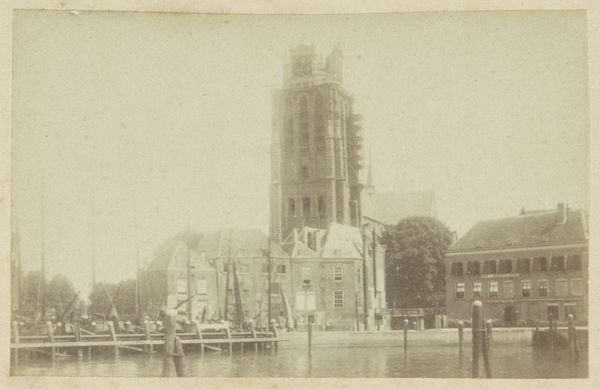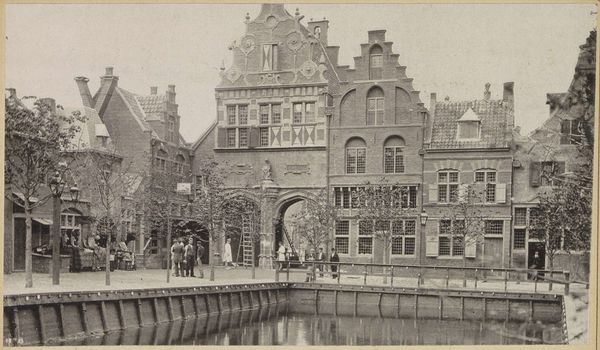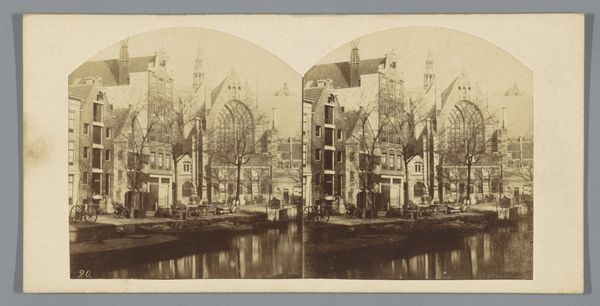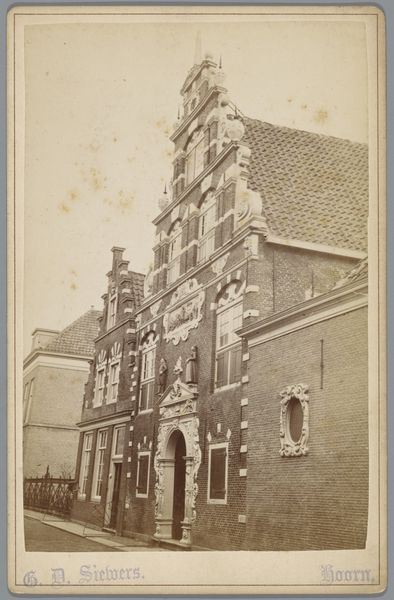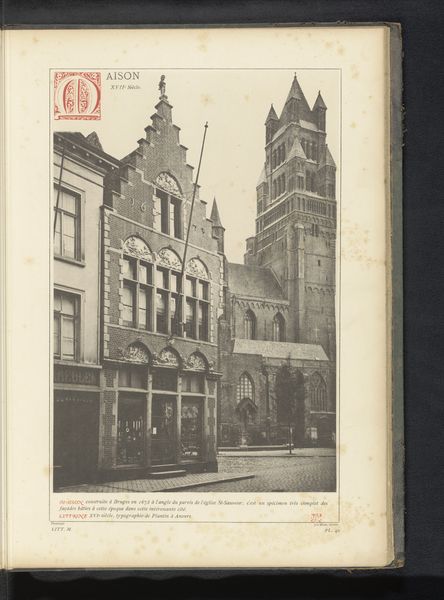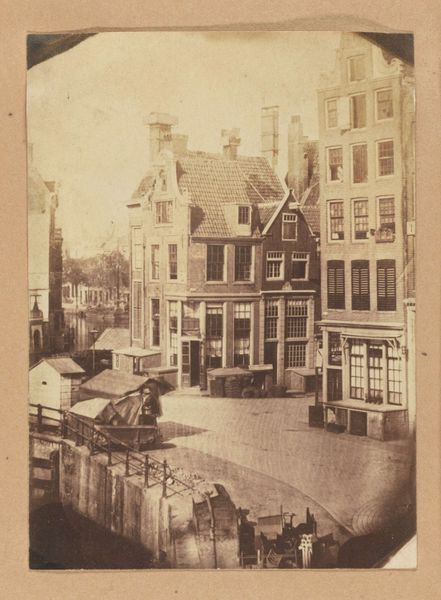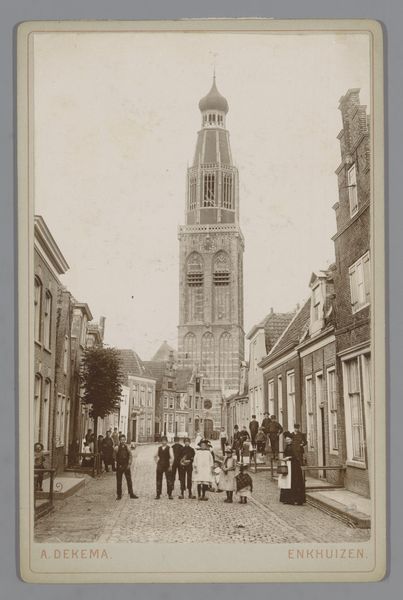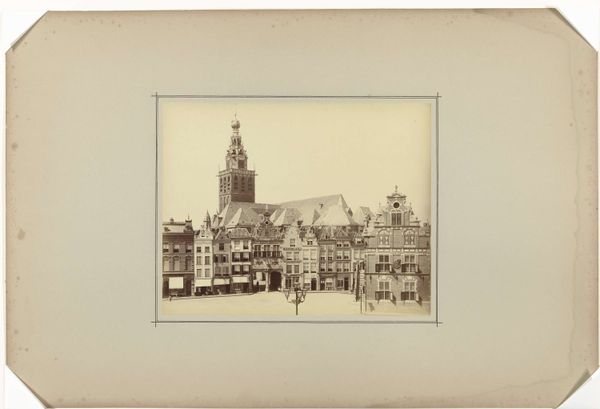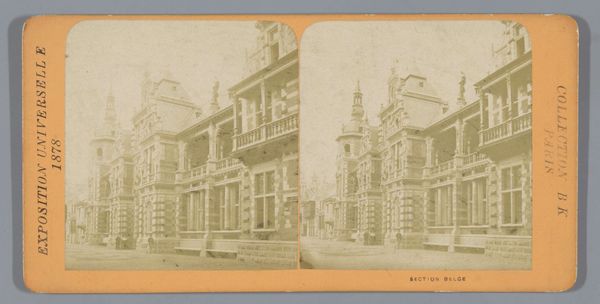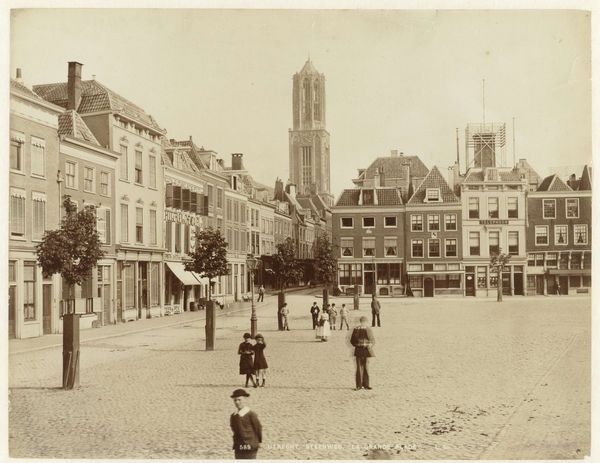
photography, gelatin-silver-print
#
water colours
#
landscape
#
photography
#
coloured pencil
#
gelatin-silver-print
#
cityscape
#
watercolor
#
realism
Dimensions: height 84 mm, width 162 mm
Copyright: Rijks Museum: Open Domain
Curator: This gelatin-silver print by Charles-Henri Plaut captures a "View of the Grote or Onze-Lieve-Vrouwekerk in Dordrecht," dating back to 1858. Editor: It has a quiet solemnity, doesn’t it? The tones are muted, almost sepia, which adds to this sense of looking back through a softened, distant memory. There's a formal quality—an architectural portrait almost. Curator: Indeed. Churches are fascinating in this respect—they served, and still serve as central symbols. What do you see at play in the presentation of Dordrecht's church? Editor: What strikes me is the social narrative woven into the very fabric of the cityscape. You have this colossal, awe-inspiring church looming over domestic spaces; that immediate visual hierarchy speaks volumes about power dynamics at the time, and about the everyday influence the Church wielded over individual lives and communal spaces. Curator: Certainly. I find the doubling interesting—how the image has near symmetry through the positioning of the tower—it perhaps speaks to the perception of truth offered in stereoscopic photos from this era. In essence, it seems Plaut presents the church not just as a building, but also as an unwavering ideal of societal structure. Editor: An ideal perhaps inaccessible for many... It’s essential to consider who would have owned such images at the time. The emergent middle class would be increasingly eager to collect symbols of civic pride, images reinforcing their growing stake in society. The reality for working-class individuals or marginalized communities likely differed greatly. Curator: A critical point—the image immortalizes more than architecture. It evokes an order in time. A photographic realism became associated with objective truth, offering both witness and social document. Editor: And a meticulously framed representation, to be sure. How different is our current visual landscape of instant unfiltered snapshots from what this painstaking, bourgeois capture represents. Curator: Precisely! An image laden with calculated meaning and a longing to reflect society in its perfect light. Something lost now that our lives are over documented with ease. Editor: It has made me reflect again on that silent tension: a yearning for meaning, alongside awareness of systemic divisions. I see in this gelatin-silver print not merely a structure, but a tableau vivant echoing social complexities of the past and those that still challenge us today.
Comments
No comments
Be the first to comment and join the conversation on the ultimate creative platform.
